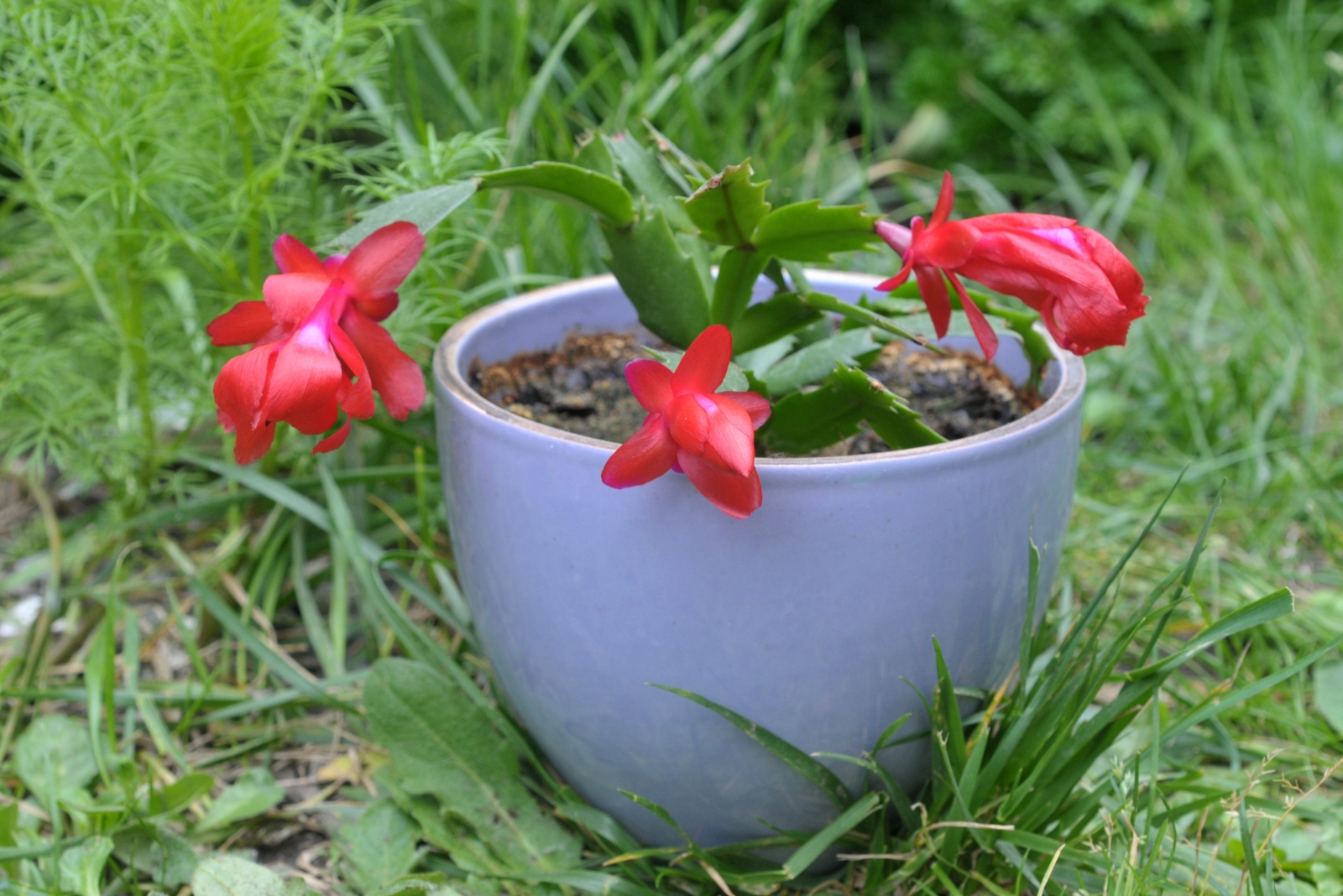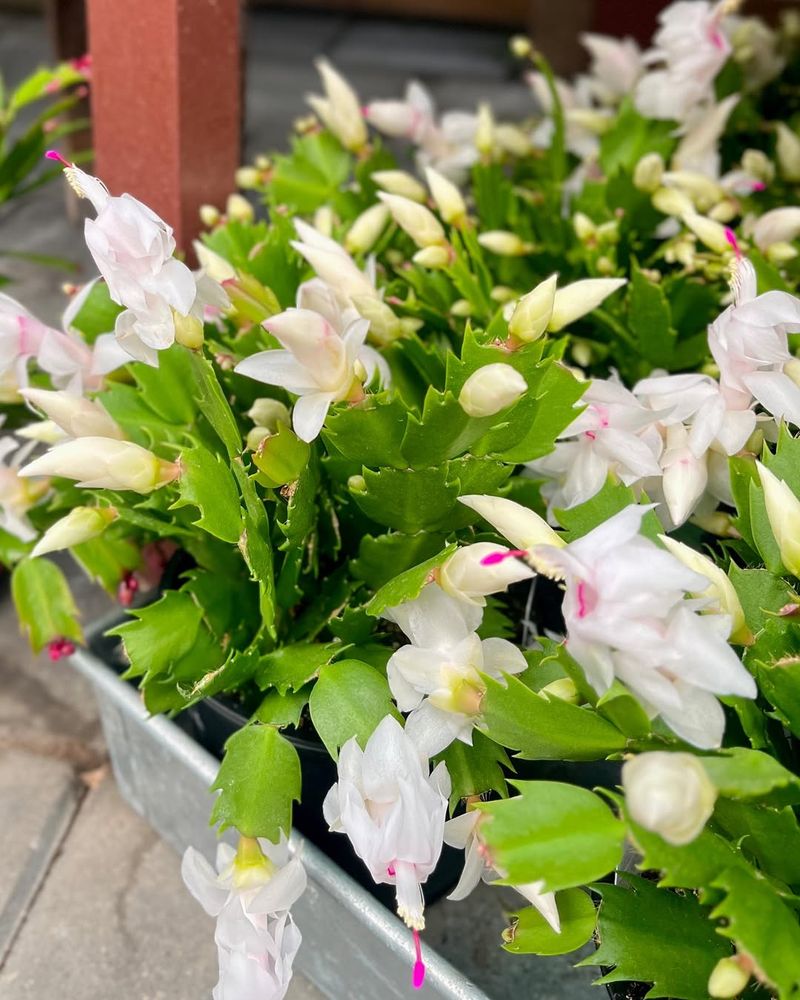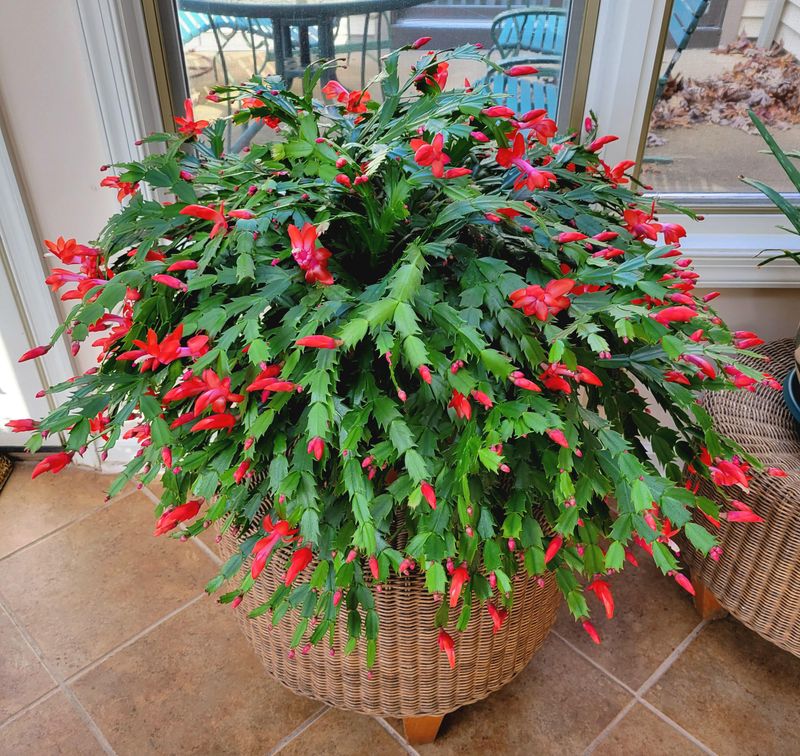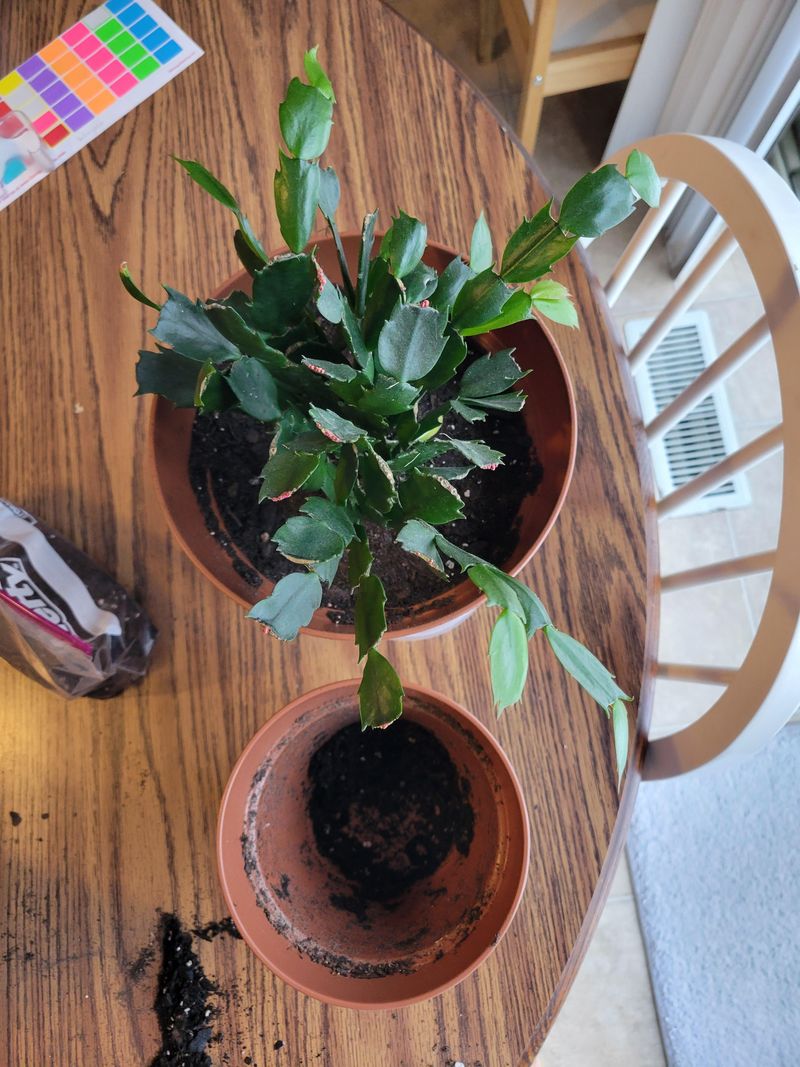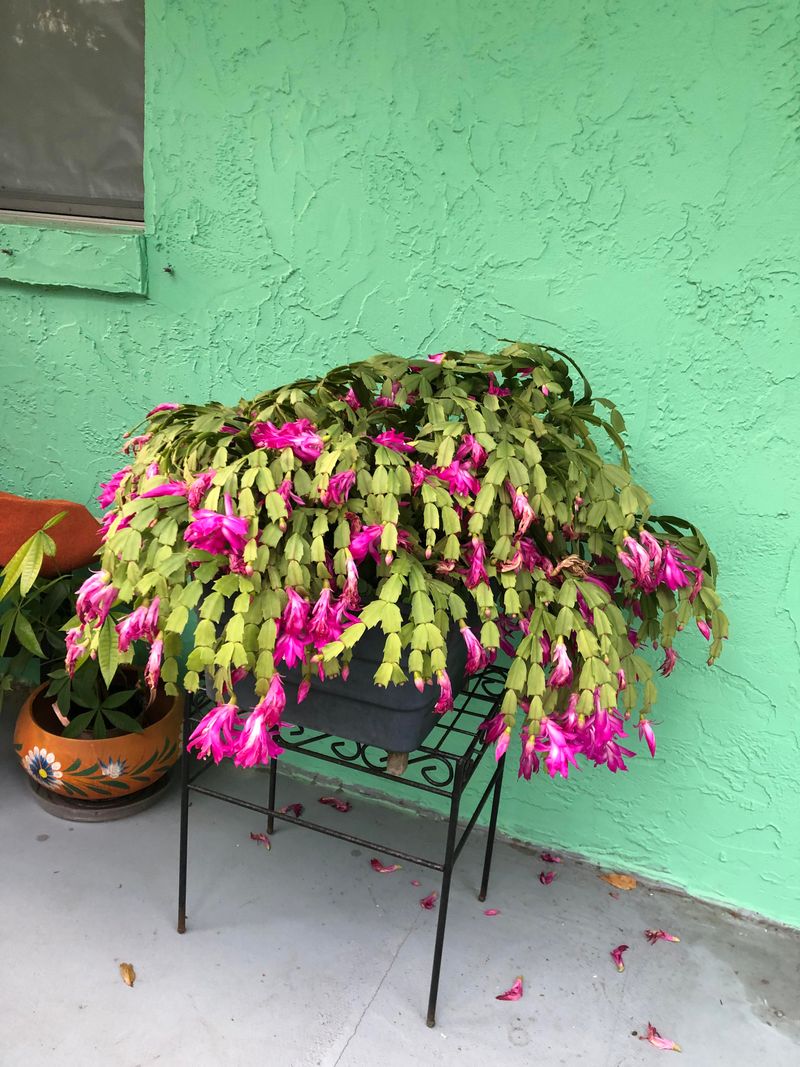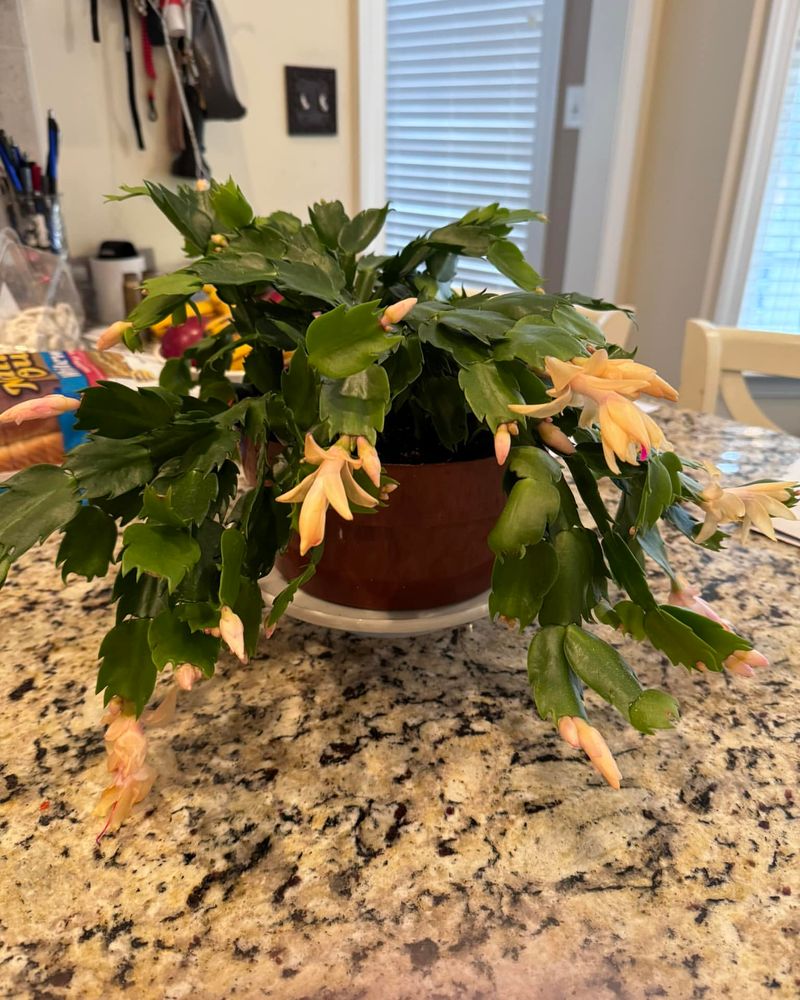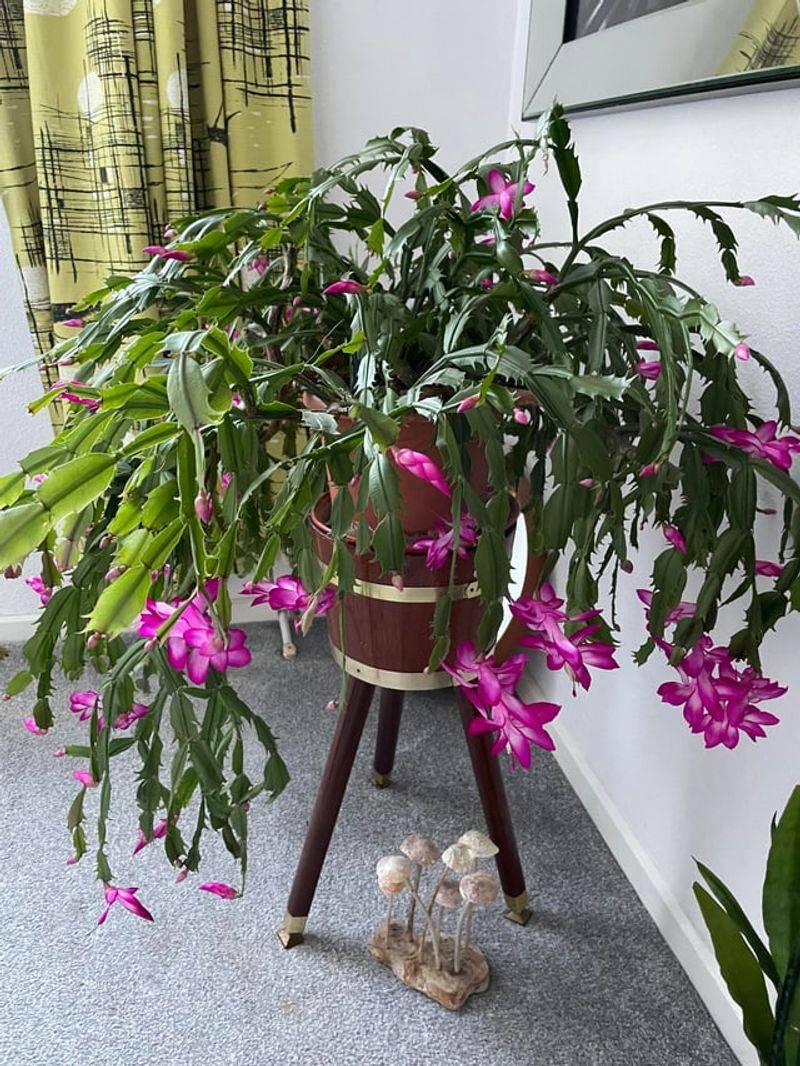Christmas cacti are beautiful plants that can bring color and life to your outdoor space in Georgia. Growing them outside can be tricky since they need just the right conditions to bloom and stay healthy.
With Georgia’s unique climate, knowing how to care for these tropical plants will help them flourish all year long.
1. Find The Perfect Shady Spot
Your Christmas cactus loves indirect sunlight rather than harsh, direct rays. Too much sun will actually burn the leaves and turn them yellow or red, which means your plant is stressed out.
Look for a spot in your Georgia yard under a tree or on a covered porch where filtered light reaches the plant. Morning sun is gentler than afternoon heat, so east-facing locations work wonderfully for keeping your cactus happy and green throughout the growing season.
2. Water When The Soil Feels Dry
Georgia summers can get pretty humid, but your Christmas cactus still needs regular watering to stay hydrated. Check the top inch of soil with your finger before adding water.
If it feels dry, give the plant a good drink until water drains from the bottom. During hot months, you might need to water twice a week, while cooler fall weather means less frequent watering to prevent root rot and keep your plant thriving.
3. Protect From Extreme Temperatures
Even though Georgia winters are mild compared to northern states, Christmas cacti can’t handle freezing temperatures. When nights drop below 50 degrees Fahrenheit, your plant could suffer damage or even die.
Keep an eye on weather forecasts during fall and winter months. Move your cactus indoors or to a protected area when cold snaps are predicted, then return it outside once temperatures rise back into the comfortable range for tropical plants.
4. Use Well-Draining Potting Mix
Christmas cacti hate sitting in soggy soil because their roots need oxygen to stay healthy. Regular garden soil holds too much moisture and can cause root rot quickly.
Mix regular potting soil with perlite, sand, or orchid bark to create a lighter blend that drains well. You can also buy cactus-specific soil from Georgia garden centers. Good drainage prevents water from pooling at the bottom, keeping roots strong and allowing your plant to absorb nutrients properly.
5. Feed With Balanced Fertilizer Monthly
Growing outdoors means your Christmas cactus uses more energy and nutrients than indoor plants. A balanced liquid fertilizer helps replace what the soil loses over time.
During spring and summer in Georgia, feed your plant once a month with a diluted fertilizer mixed at half strength. Stop fertilizing in fall when the plant prepares to bloom. Too much fertilizer can actually prevent flowers from forming, so less is definitely more when it comes to feeding schedules.
6. Encourage Blooming With Darkness
Christmas cacti need long nights and shorter days to trigger their spectacular blooms. Starting in September or October, make sure your plant gets at least 12 to 14 hours of complete darkness each night.
Outdoor Georgia plants naturally get this cycle as days shorten in fall. Avoid placing them near porch lights or streetlights that might confuse the plant’s internal clock and delay flowering, ruining your chance for those gorgeous holiday blooms.
7. Watch For Pests And Problems
Outdoor Georgia plants attract more bugs than indoor ones, so keep an eye out for mealybugs, spider mites, and scale insects. Tiny webs, sticky residue, or white fuzzy spots signal trouble.
Spray your plant with insecticidal soap or neem oil to control infestations naturally. Check the undersides of leaves regularly since pests love hiding there. Catching problems early prevents serious damage and keeps your Christmas cactus looking vibrant and beautiful throughout every season in Georgia.
8. Provide Good Air Circulation
Georgia’s humidity can create the perfect environment for fungal diseases and mold on your Christmas cactus. Stagnant air around the leaves traps moisture and invites problems.
Place your plant where gentle breezes can reach it, but avoid strong winds that might knock it over or damage the delicate segments. Proper airflow helps leaves dry quickly after rain or watering, reducing disease risk while keeping your plant strong, healthy, and ready to produce those stunning seasonal flowers.

